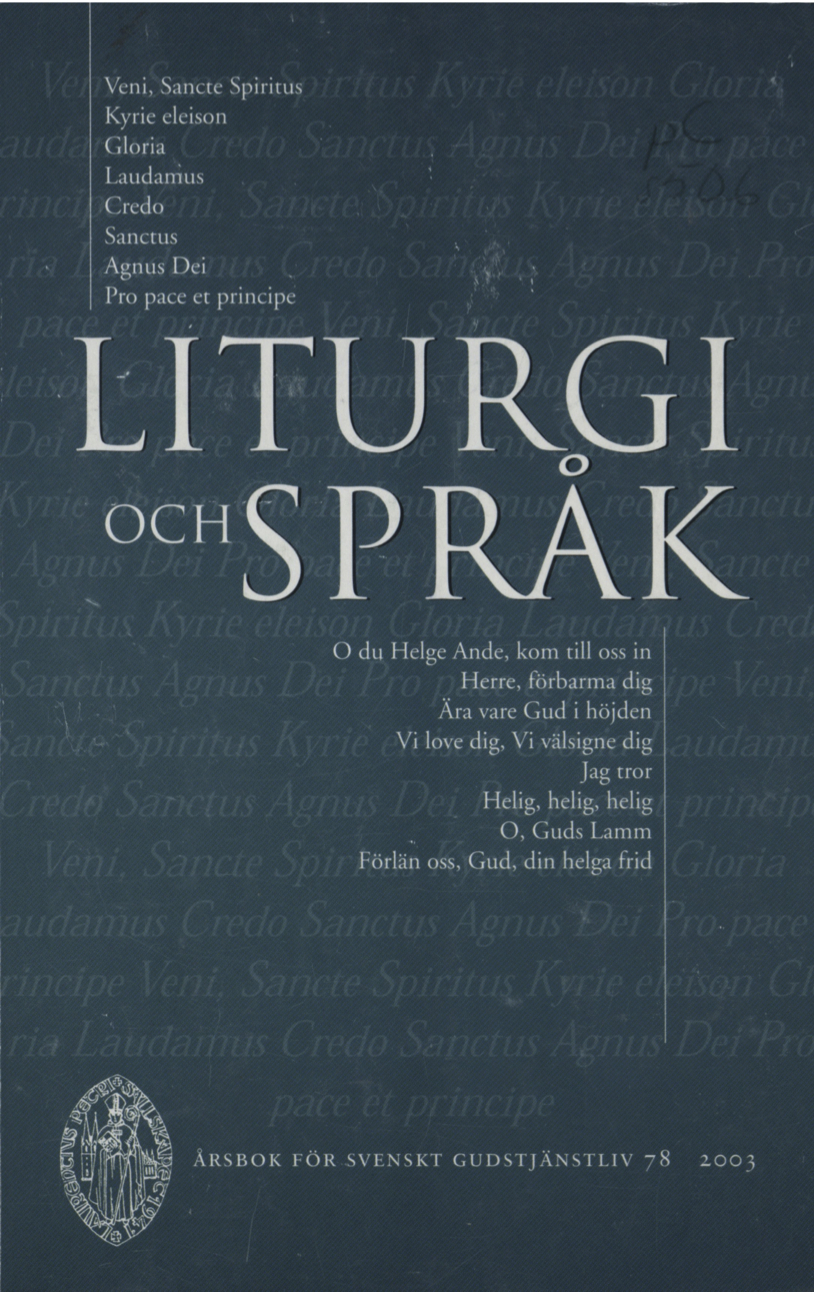Att »bryta» i gudstjänsten Liturgin ur flerspråkigt perspektiv
Abstract
Today’s society is becoming increasingly pluralistic. The presence of groups from many different parts of the world means that many languages apart from Swedish are spoken in this country. Multiethnicity also leads to multicultural developments. As a consequence many people have to live in multilingual situations of various sorts. Language is a complex reality, and there are types of »language» which are not literally verbal. The relation ship between language and culture is intimate, and culture can therefore be seen as a question of language. Since liturgy is a linguistic phenomenon in many senses, this complicated multilingual development of society is of consequence for the life of the church. It can be of pastoral interest to reflect on how the Church of Sweden should meet this challenge. This essay is an attempt at such a discussion.
Language has several functions. These can be applied to how language functions in the liturgy as well, even if there are specific aspects in their significance for this special situation. It is also necessary to understand these different functions before one can seriously approach the question of multilingualism. Five such functions are identified as of interest in understanding the liturgy. They are the cognitive, informative, expressive, performative and cohesive dimensions of language.
Multilingualism is traditionally thought of in terms of the classic bilingual situation in a family with parents from different countries. However, even this type is not as clear cut as is sometimes believed, and today the phenomenon of bilingualism, not to speak of a broader multilingualism, has complex presuppositions and takes varying forms. These questions are discussed with reference to the Swedish context, and a new form of Swedish - »rinkebysvenska» - is mentioned, which is the result of the influence of multiethnic factors in areas of large cities with a predominantly mixed, immigrant population.
These reflections on the functions of language and contemporary multilingual contexts are related to different aspects of the church’s liturgical life: services at special times of the liturgical year and celebration of the sacraments in other languages; the significance of different varieties of »rinkebysvenska» for school services; the pastoral and evangelisation challenge of the multicultural presuppositions of services related to the role of the Church of Sweden as a national church (whilst no longer a state church); »multilingual» aspects of liturgical life as regards music and hymns, church architecture and ecumenical worship.
Downloads
Publicerad
Nummer
Sektion
Licens
© författarna, Laurentius Petri Sällskapet för svenskt gudstjänstliv samt Artos & Norma bokförlag. Det är tillåtet att kopiera och använda material ur Svenskt Gudstjänstliv för forskningsändamål om källan anges. För övriga ändamål kontakta respektive artikelförfattare samt förlaget. Särskilda restriktioner kan gälla för bildmaterial.


